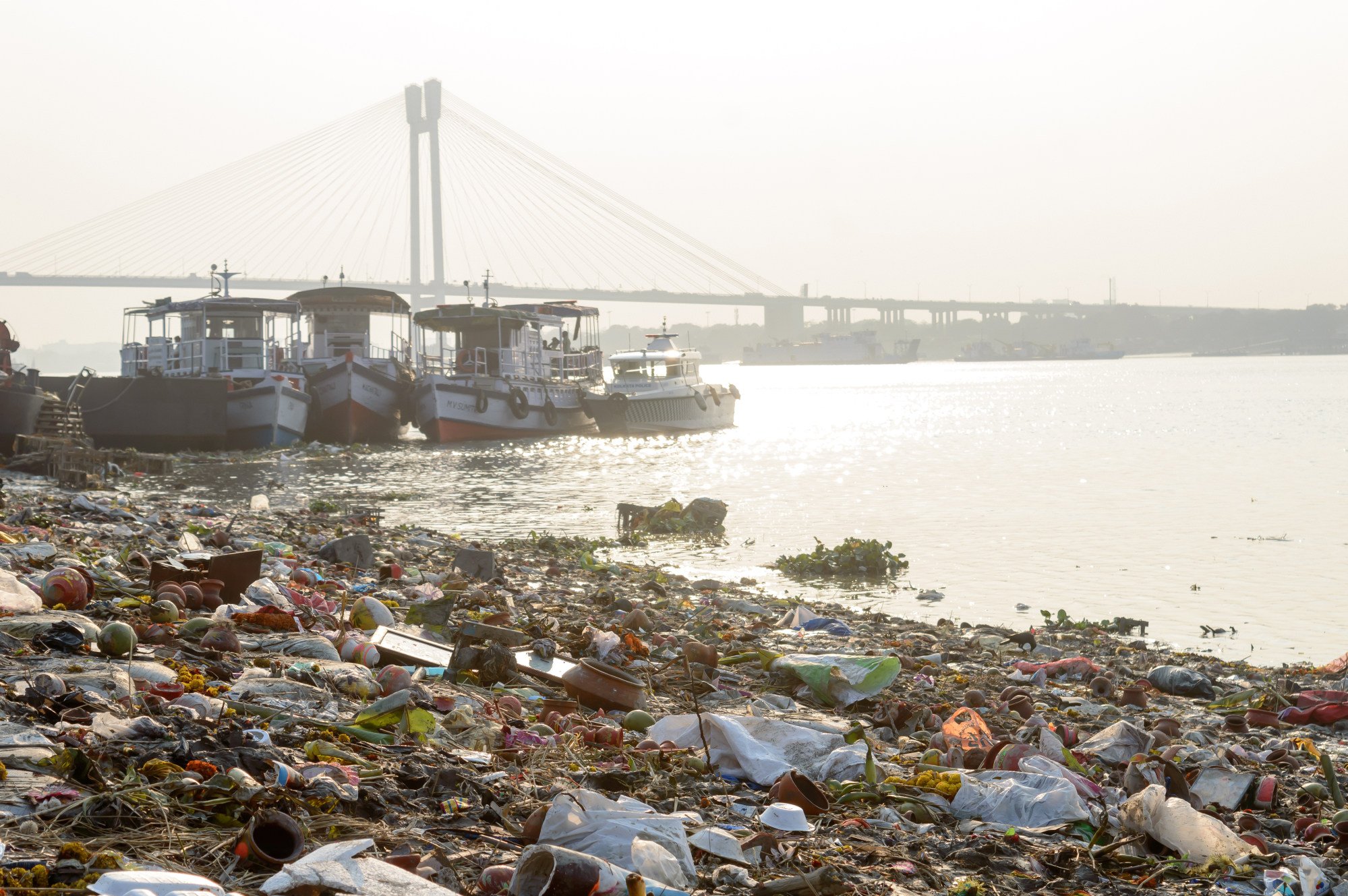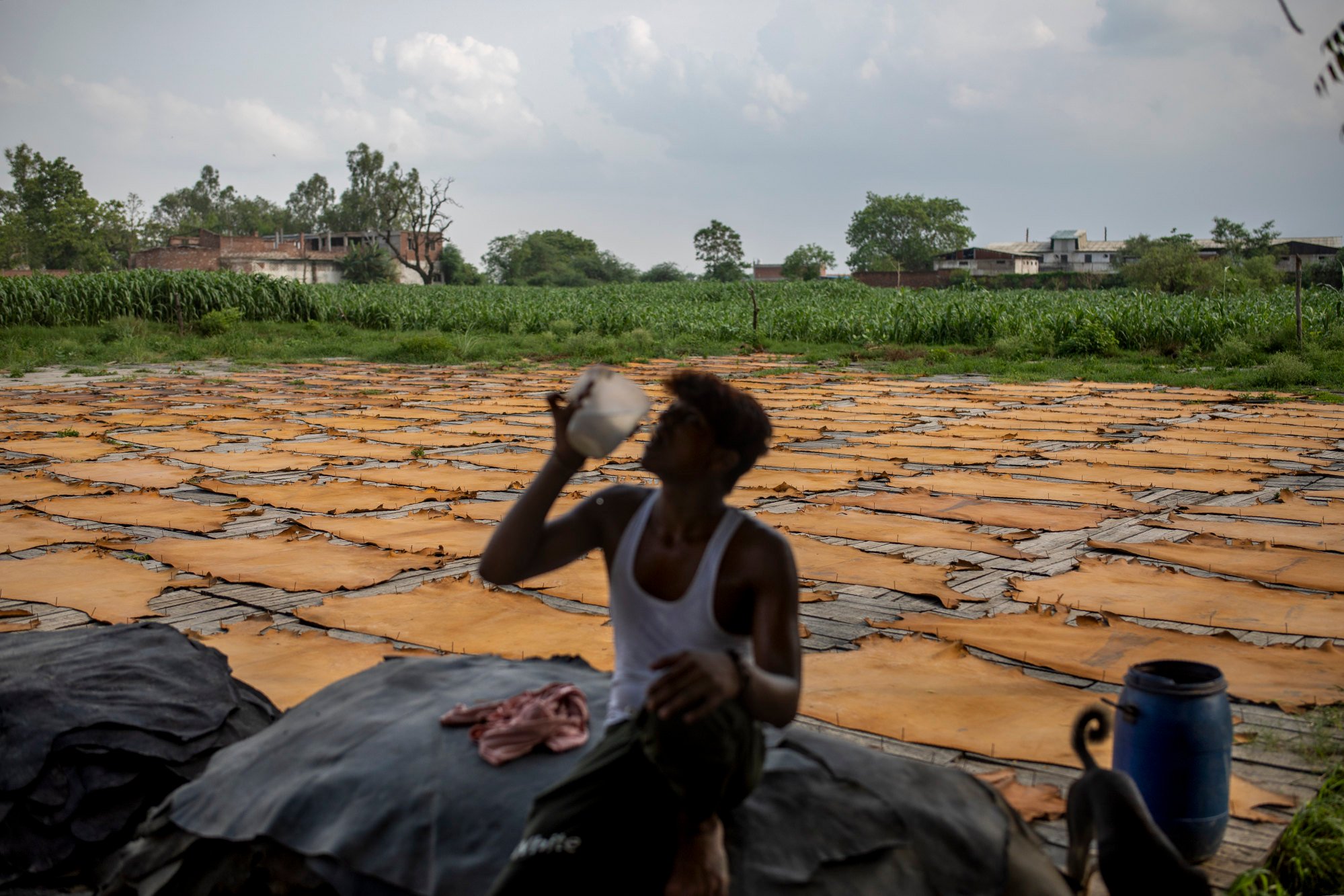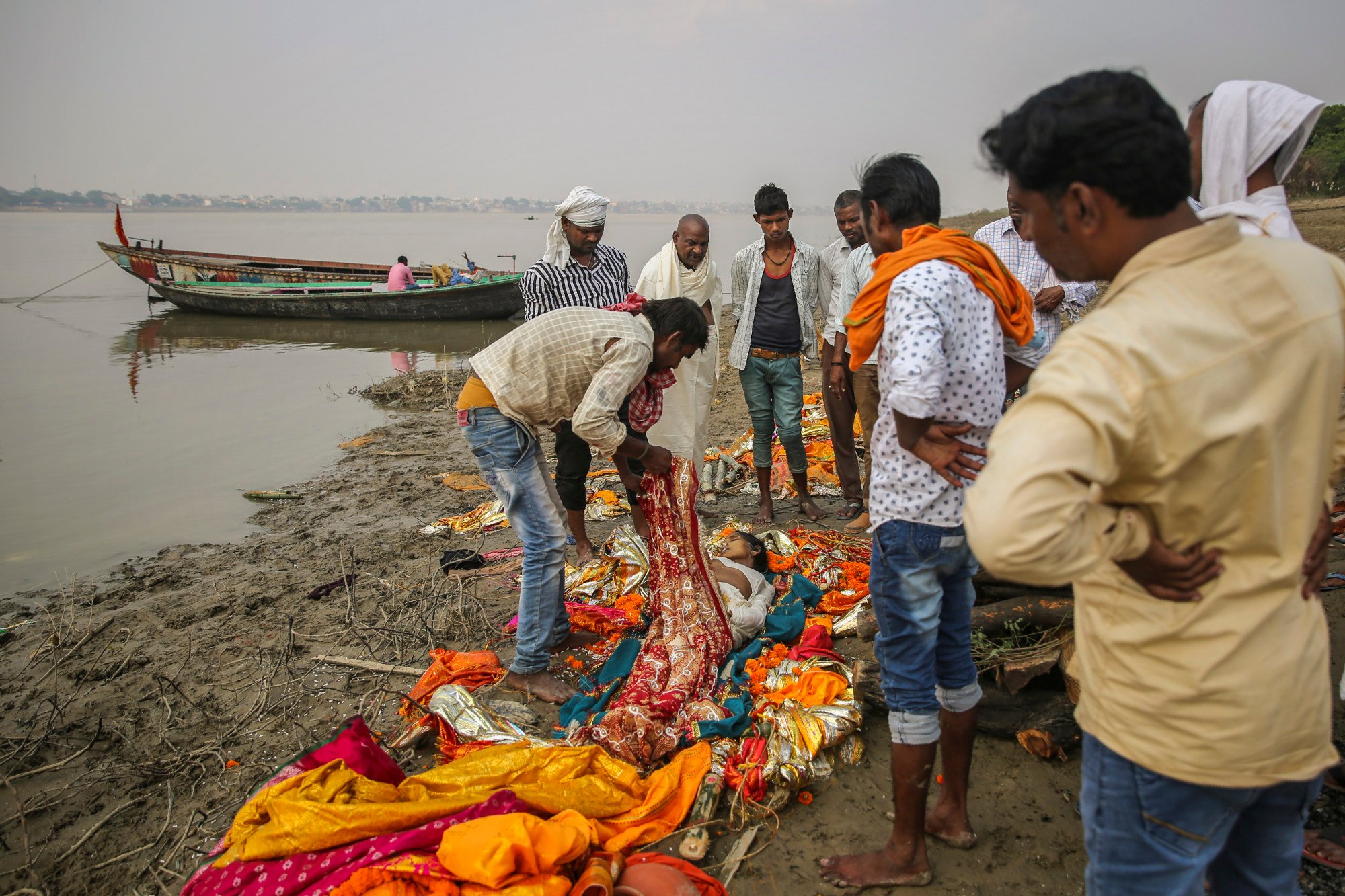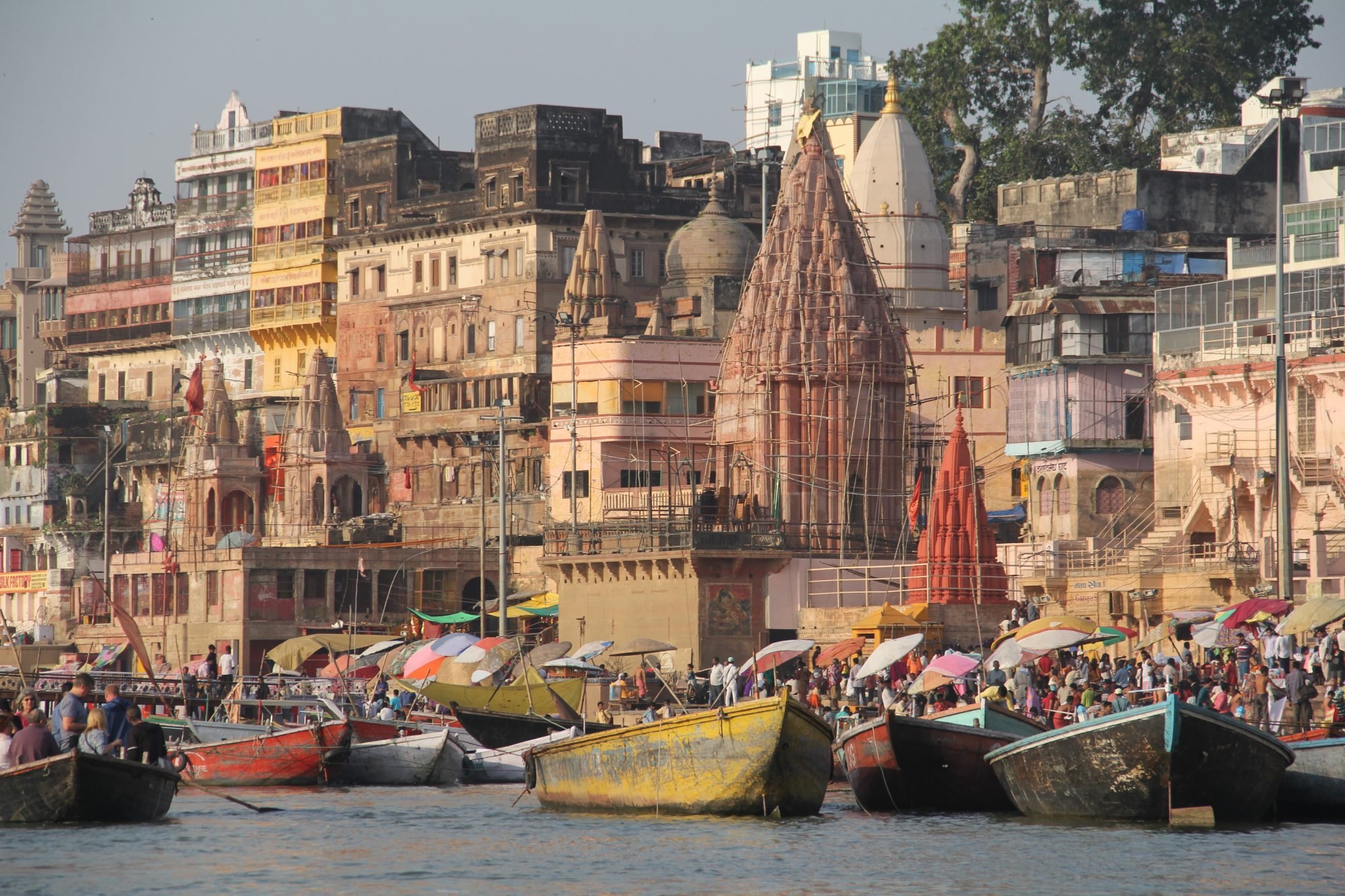Most Indians believe the Ganges, originating from the ice cave of Gaumukh near the temple town of Gangotri, has a self-purifying quality and is seen as a living goddess, supplying water for some 40 per cent of the country’s population.
India’s holiest waterway, celebrated with birth and death ceremonies on its banks, is however also somewhat of a paradox, as it became through the decades of human activities one of the world’s most polluted rivers. It is linked to several waterborne diseases which kill thousands of adults and children annually.

The Indian government has been trying to clean up the Ganges since the 1980s, and has spent millions of dollars. For years, the Ganges clean-up has been a political issue, with many accusations of corruption and mismanagement. According to leading Ganges activists, big dams are destroying the very character of the river.
In May 2019, the Central Pollution Control Board said in a report that the water from the Ganges was absolutely unfit for “direct drinking”. The river’s faecal coliform level (found in gut and faeces of warm-blooded animals) was detected to be three to 12 times higher than the permissible level at most interstate boundaries.
The National Green Tribunal in 2022, while hearing a cluster of cases around Ganges pollution dating back to 1985, observed that “nearly 50 per cent of untreated sewage and substantial industrial effluents are still being discharged in the river or its tributaries, in absence of requisite functional treatment capacity”.
Describing long-time government clean-up efforts as a “collective failure”, Priti Mahesh, chief programme coordinator of Toxics Link, an environmental NGO in New Delhi, told This Week in Asia: “Despite efforts, the faltering progress reflects not just environmental neglect, but also the systemic challenges that must be addressed with unwavering determination and innovative solutions.”

When the Ganges enters the plains and flows across 2,600km in northern India, it passes hundreds of large and small towns and cities such as Allahabad, Patna, Kanpur and Kolkata, absorbing raw sewage, plastic, agricultural run-offs, toxic pesticides, domestic waste and industrial effluents.
Kanpur has more than 400 tanneries which discharge most of their waste into the waters of the Ganges. Many have been closed for non-compliance of environmental laws.
Funeral ceremonies are also held on the banks of the river and ashes of the cremated are immersed in the waters to carry their spirit into the next life or end rebirth.
People bathe in the waters and thousands of chemically treated flowers are laid down as offerings, which float down the river, leaching out chemicals. Start-ups such as Phool are now converting waste flowers into incense sticks.

A UN-recognised work in progress
The NMCG started life in 2014 as the Namami Gange project, in which Modi pledged 200 billion rupees towards the clean-up of the Ganges.
The twin objectives of the NMCG are “effective abatement of pollution, conservation and rejuvenation of National River Ganga”. The government calls it a scientific programme that uses cutting-edge technology to clean the Ganges. It promises to make the river fit for bathing at least.
The initial target was to clean up the river by 2019, but this was extended to 2022 with an additional budget of 100 billion rupees. The target has since been moved to 2026.

Varanasi, the ancient city that is the spiritual centre of the Hindus, is also Modi’s political constituency. Sewage pumping stations, built in the 1970s and upgraded, line the riverfront in Varanasi. The city today has laws banning plastics and requiring boats on the river to use compressed natural gas, while new public toilets have been built to reduce open defecation.
The government has also focused on planting and growing native trees along watercourses, which helps prevent pollutants and sediment from entering the river.
“The Ganges is much cleaner now than before. We don’t see dead bodies, garbage or rotten flowers floating. There used to be open sewers flowing into the river, we don’t see that nowadays,” said Hemant Sinha, 45, a boatman in Varanasi.
The Ministry of Jal Shakti, which is in charge of water issues, said in 2022 that “between 2018 and 2021 there was a marked improvement in the state of the river as a result of multisectoral interventions”. Improvement in water quality also led to “increased sightings of aquatic species such as Gangetic Dolphins otters, turtles and Hilsa,” it added.
Yogi Adityanath, the chief minister of Uttar Pradesh, in January 2023 said dolphins which were on the verge of extinction had started reappearing in the river because the water had become clean.
Despite this, lawyer Sanjay Upadhyay said efforts to clean up the Ganges had not looked into different techno-innovative solutions available, including using wetlands for waste water treatment, or reverse osmosis or crystallisation of pollutants.
“Actual monitoring on the ground is [also] quite vague. We also need a platform where pilot projects to try potential solutions to treat sewage or clean up water bodies can be experimented and chosen on their value,” said Upadhyay, founder of India’s first environmental law firm, Enviro Legal Defence.
According to Upadhyay, the most effective way to clean the river is to restore its natural flow – not an easy feat. “We have to look at encroachment in the catchment areas and address water basins and their management.”
Punyasloke Bhadury, a professor from the Integrative Taxonomy and Microbial Ecology Research Group at research institute IISER Kolkata, called for “local-centric” solutions to cleaning up the Ganges such as developing dedicated biobanks of novel microbes from the lower stretch of the Ganges, and integrating them into cost-effective sustainable approaches to clean the river.
“The communication between scientists and policymakers seems to be improving, and we are now better equipped to at least identify the challenges … A scientific approach is [also] important in monitoring the river,” he said.


